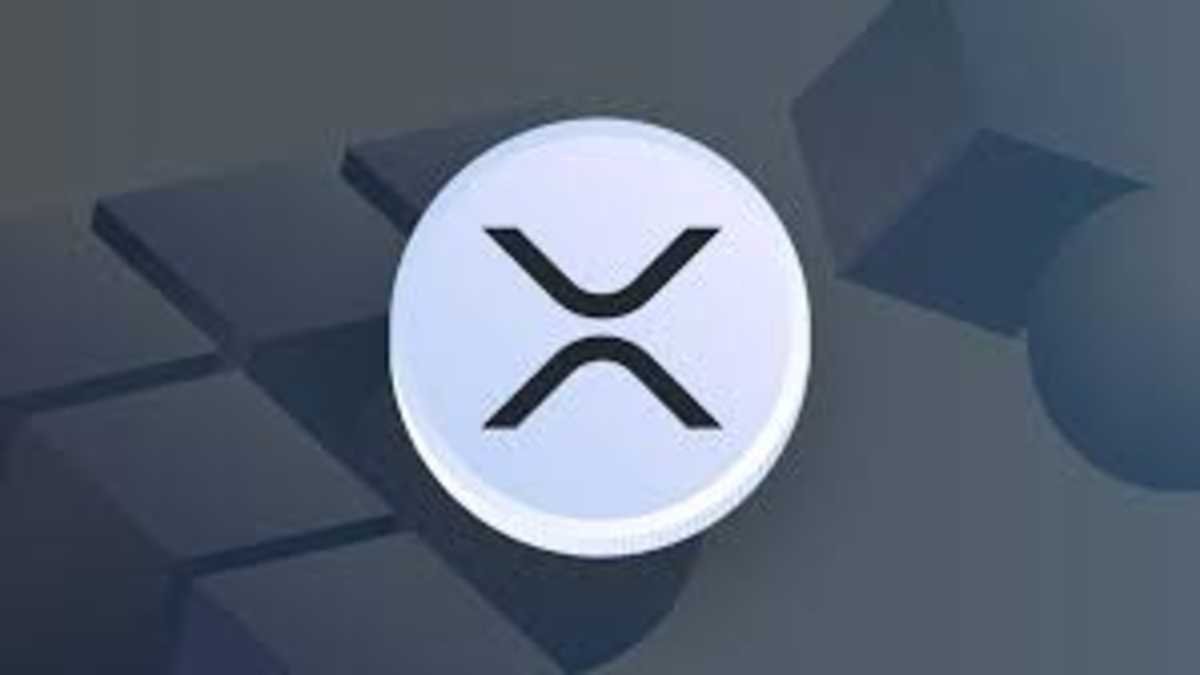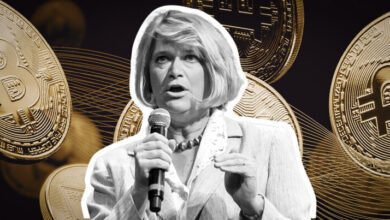
XRP Coin: A Comprehensive Overview of its Role in Cryptocurrency and Ripple’s Legal Struggles
XRP, the native cryptocurrency of Ripple, has been at the center of many discussions in the cryptocurrency world, primarily due to its unique positioning within the digital currency space and the ongoing legal battle with the U.S. Securities and Exchange Commission (SEC). Known for its fast transaction speeds and low transaction costs, XRP aims to provide a decentralized platform for cross-border payments, making it one of the most widely used and controversial cryptocurrencies globally.
In this comprehensive article, we will explore the origins, features, and utility of XRP, its role in the ongoing Ripple vs. SEC lawsuit, and its broader implications for the cryptocurrency industry and regulation.
What is XRP?
XRP is a digital asset designed to facilitate fast and low-cost international transactions. It is built on the Ripple network, which operates using a consensus algorithm rather than a proof-of-work system, which is commonly used by cryptocurrencies like Bitcoin. This means that XRP transactions are processed much faster and with significantly lower fees, making it an attractive option for financial institutions that need to move money across borders quickly and efficiently.
While Bitcoin and Ethereum focus on decentralized applications and store of value, XRP is specifically designed to serve as a bridge currency for remittances and cross-border transfers. Ripple Labs, the company behind XRP, has formed partnerships with numerous banks and financial institutions around the world to integrate XRP into their payment systems.
XRP’s speed and scalability make it an ideal asset for the payments sector, and it has been touted as a potential competitor to traditional financial networks like SWIFT. While XRP is often associated with Ripple, it is important to note that the coin can be used on a decentralized network of validators, which makes it distinct from many centralized cryptocurrencies.
XRP’s Key Features:
- Speed: XRP transactions are settled in approximately 3-5 seconds, significantly faster than many other cryptocurrencies, including Bitcoin and Ethereum, which can take minutes or even longer to confirm transactions.
- Low Transaction Costs: XRP offers one of the lowest transaction fees in the cryptocurrency world, making it particularly attractive for cross-border payments, where high fees can be a barrier to efficient money transfer.
- Scalability: XRP’s network can handle over 1,500 transactions per second, which is far more scalable than Bitcoin or Ethereum’s networks. This allows XRP to support high volumes of transactions, making it ideal for financial institutions.
- Decentralized Consensus: While Ripple Labs plays a key role in developing and promoting XRP, the cryptocurrency operates on a decentralized network of validators, meaning that no single entity controls the network.
- Interoperability: XRP is designed to work seamlessly with both traditional financial systems and newer blockchain-based solutions, making it a bridge currency for users across different platforms and networks.
XRP’s Role in the Ripple Ecosystem
Ripple Labs created XRP to address a key problem in the traditional financial system: the inefficiency of cross-border payments. Traditional banking networks can take several days to settle international payments, and the fees involved can be quite high. Ripple’s mission is to make cross-border payments faster, cheaper, and more accessible.
XRP serves as a bridge currency in Ripple’s cross-border payment system. Financial institutions can use XRP to facilitate transactions between different currencies, reducing the need for intermediaries and lowering transaction costs. Ripple’s RippleNet network enables real-time, secure payments between parties anywhere in the world, and XRP is used to move value across the network.
Ripple has formed numerous partnerships with major financial institutions, including Santander, PNC, and SBI Holdings, to integrate XRP into their payment systems. These partnerships have helped increase the adoption and utility of XRP as a global payment solution.
XRP and the SEC Lawsuit: A Landmark Legal Battle
Despite its potential in revolutionizing cross-border payments, XRP has faced significant challenges, particularly in the form of the ongoing legal dispute between Ripple Labs and the U.S. Securities and Exchange Commission (SEC). The SEC filed a lawsuit against Ripple in December 2020, accusing the company of conducting an unregistered securities offering by selling XRP. The agency contends that XRP qualifies as a security and, therefore, should be subject to U.S. securities laws, which require registration and compliance with strict regulatory guidelines.
Ripple, on the other hand, argues that XRP is a digital currency, not a security, and that the SEC’s classification is overly broad and harmful to the cryptocurrency industry. The outcome of this lawsuit could have far-reaching consequences for XRP and the broader cryptocurrency market, as it could set a legal precedent for how other digital assets are regulated in the U.S.
The SEC lawsuit has caused considerable volatility for XRP, as exchanges like Coinbase and Binance temporarily halted XRP trading in response to the legal proceedings. Despite this, Ripple has maintained that XRP is essential to the future of global payments and has continued to fight the charges in court.
Ripple’s Defense and Legal Strategy
Ripple’s legal defense hinges on the argument that XRP is not a security but rather a digital currency. The company asserts that the SEC’s interpretation of the law is flawed and that XRP’s utility as a currency, not a security, should exempt it from securities laws.
Ripple’s defense team has also emphasized the fact that XRP has been traded publicly on exchanges for several years without any prior regulatory intervention from the SEC. The company argues that the SEC’s decision to pursue legal action against Ripple is inconsistent with the agency’s approach to other cryptocurrencies, like Bitcoin and Ethereum, which have not been classified as securities.
Ripple has also pointed to the practical utility of XRP in the global payments system. The company argues that XRP has real-world applications in the financial industry, and its use by major banks and financial institutions should be seen as evidence of its value as a currency rather than an investment vehicle.
Ripple’s legal team has expressed confidence that the court will ultimately rule in its favor. The company has fought to have the case dismissed on several occasions, and despite setbacks, Ripple continues to argue that the SEC’s lawsuit lacks merit.
The Broader Implications for Cryptocurrency Regulation
The Ripple lawsuit has significant implications not only for XRP but for the broader cryptocurrency industry. The outcome of the case could set a precedent for how other digital assets are regulated in the U.S., particularly in terms of whether they are classified as securities.
If the SEC wins the case and XRP is classified as a security, it could lead to stricter regulations for the entire cryptocurrency market. This could result in increased compliance costs for digital asset companies and may even lead to the delisting of certain cryptocurrencies from major exchanges.
On the other hand, if Ripple wins the case, it could pave the way for greater clarity and flexibility in the regulatory treatment of digital assets. This could lead to a more favorable environment for cryptocurrency innovation in the U.S., with clearer rules on how digital assets should be classified and regulated.
A Ripple victory could also encourage other cryptocurrency companies to challenge the SEC’s authority over digital assets, potentially leading to a more robust legal framework that balances innovation with investor protection.
The Impact of the Lawsuit on XRP Price
The legal battle between Ripple and the SEC has had a significant impact on XRP’s price, with the cryptocurrency experiencing periods of volatility throughout the lawsuit. Following the SEC’s announcement of the lawsuit in December 2020, XRP’s price dropped sharply, as many exchanges halted trading in the token. However, XRP has since recovered, demonstrating its resilience in the face of legal challenges.
The price of XRP has been influenced not only by the outcome of the lawsuit but also by broader market trends and investor sentiment. As with other cryptocurrencies, XRP’s price is subject to fluctuations based on news events, regulatory developments, and overall market conditions.
Despite the legal uncertainty, XRP remains one of the top 10 cryptocurrencies by market capitalization, demonstrating its widespread adoption and potential in the global payments ecosystem.
Future Prospects for XRP
Looking ahead, the future of XRP depends largely on the outcome of the SEC lawsuit. A favorable ruling for Ripple could help solidify XRP’s position as a leading digital asset in the global payments space, with continued adoption by financial institutions and businesses. The success of RippleNet and the broader Ripple ecosystem would likely lead to further growth for XRP as it continues to be integrated into cross-border payment systems.
However, a ruling in favor of the SEC could present challenges for Ripple and the broader cryptocurrency market. The classification of XRP as a security could lead to increased regulatory scrutiny, which could raise compliance costs and limit XRP’s utility for certain users. This could also have a chilling effect on innovation in the digital payments sector.
Regardless of the outcome, XRP will remain an important part of the cryptocurrency landscape, and its continued development and utility will likely influence future discussions around cryptocurrency regulation and innovation.
XRP’s journey from a digital asset designed for efficient cross-border payments to a symbol of the broader struggle between innovation and regulation highlights the complexities of the cryptocurrency space. While the legal battle with the SEC remains unresolved, XRP’s utility and potential in the global payments system continue to attract attention from both financial institutions and investors.
As the case progresses, the cryptocurrency community remains hopeful that a favorable outcome for Ripple will pave the way for greater regulatory clarity and a more favorable environment for digital asset innovation. Regardless of the legal outcome, XRP’s impact on the cryptocurrency industry and its role in the future of payments will undoubtedly continue to be a topic of great interest and importance.
This detailed overview of XRP covers its features, role within Ripple’s ecosystem, and the broader implications of the ongoing legal battle with the SEC. The future of XRP will depend on multiple factors, including the outcome of the lawsuit, the broader market trends, and regulatory decisions that could impact the cryptocurrency industry as a whole.



